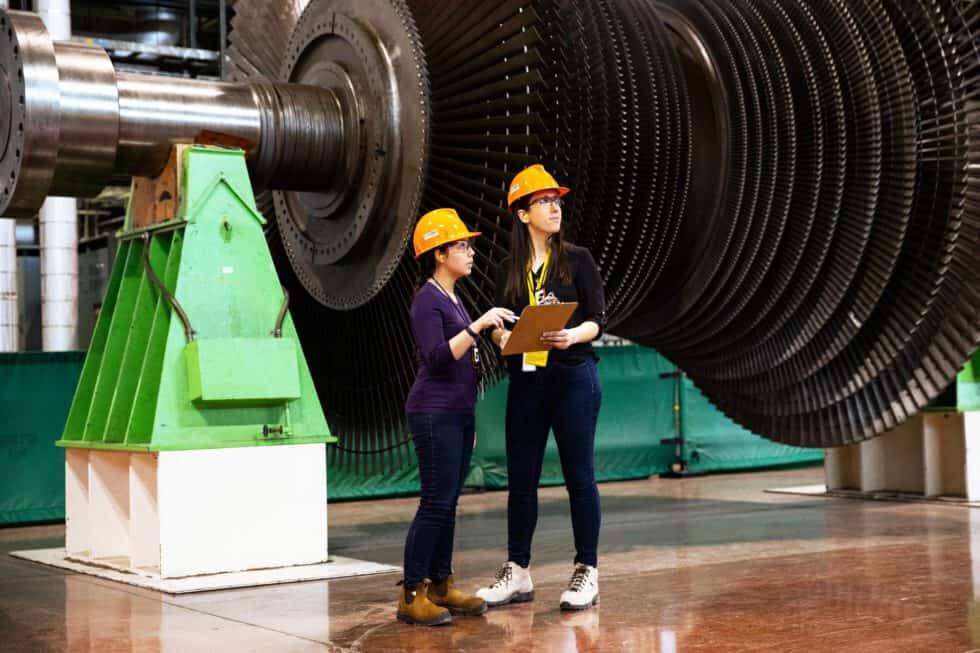Anti-nuclear group demanding Pickering plant extension be denied until refurbishment is complete
Published October 15, 2024 at 10:26 am

The news that Pickering Nuclear’s four ‘B’ reactors were given a two-year extension was cause for celebration for pro-nuclear advocates and for operator Ontario Power Generation when the announcement was made last week.
But an ask for another two years – taking the station to 2028 and timing the extension closer to when an already approved refurbishment is set to begin – has an anti-nuclear organization galvanized to fight the extension.
The Canadian Coalition for Nuclear Responsibility (CCNR) is urging the Canadian Nuclear Safety Commission (CNSC) not to grant the extension to what the group is calling “old reactors” built “half a century ago” and declared in a news release they will be stating their case at the hearings later this year that no further extension be granted “unless and until they are refurbished.”
One of the main areas of concern for the organization is the condition of the pressure tubes and calandria tubes, which have been subjected to “many years of bombardment with fast neutrons under conditions of high temperature and very high pressure.”
The metal walls of the highly radioactive pressure tubes have become more susceptible to cracking or fracturing when stressed, the statement from the CCNR read, making them “more likely to leak or even burst with little or no warning,” which could “create a pathway for radioactive gases and vapours to escape from the core into the reactor building and perhaps into the atmosphere outside the plant.”
The group wants the nuclear safety commission to require refurbishment with full replacement of pressure tubes before any extension is given, a decision that would require a “very prolonged shutdown” but one that is needed, “if CNSC is to do its job, putting safety first.”
The nuclear safety commission, however, has already approved an extension of the reactors to 2026 and the provincial government, after four years of lobbying from groups like Canadians for Nuclear Energy, announced earlier this year the four ‘B’ reactors would be getting a refurbishment, a multi-billion dollar decision that will keep the station on the shores of Lake Ontario producing clean, green energy for decades to come.
Refurbishing Pickering was the sensible option, said Dr. Chris Keefer, the President of Canadians for Nuclear Energy. “It avoids seven megatons of emissions per year, produces medical isotopes that sterilize 20 per cent of the world single use medical devices and provides 7,600 high quality full time equivalent jobs.
The four ‘B’ reactors, built in the 1980s, are still going strong and ran for 100 days straight last summer – “right through peak demand,” Keefer noted – until a planned outage in October.
“Their performance has never been better, despite being ‘old,” he said.
The provincial government has made several key nuclear sector announcements in recent years, notably the small modular reactor project underway at nearby Darlington (which is midway through its own $12.8 billion refurbishment that is so far on time and on budget), as well as a desire to add production at the Bruce plant, already the world’s largest.It’s all part of a nuclear expansion with a price tag that could be in the hundreds of billions of dollars as Ontario prepares to power up the battery plants for the upcoming transition to electric vehicles as well the need for companies to meet their carbon emission goals.

Refurbishment at Darlington Nuclear plant
“You can’t run those on wind and solar,” Keefer noted. “You can build an infinite number of wind turbines but they don’t show up when you need them. They’re fair-weather friends.”
“Nuclear is reliable, long-lived and like a good friend, they are there when you need them.”
Former Energy Minister Todd Smith is on record as saying there is “no way” the Province can be ready for what is coming without nuclear energy.
Nuclear power already provides more than half of Ontario’s electrical needs, with newer sources, such as wind (nine per cent), solar and biofuel, less than ten per cent. The Pickering plant alone provides 14 per cent of all electricity in the province.
Energy Minister Stephen Lecce says the extension at the ‘B’ plant will be welcomed by Ontarians and the 4,500 workers at the plant.
“We have long believed that the Pickering Nuclear Generating Station is essential to Ontario’s energy expansion plan, which is why we welcome the approval to extend the operation of one of the country’s best run generating stations and a critical source of affordable and non-emitting power for two million homes,” he said.
The work to refurbish Pickering will begin in 2028, with the four ‘B’ reactors returning to service in the mid-2030s.
As planned, Unit 1 on the Pickering ‘A’ side ceased commercial operation earlier this year, and Unit 4 will reach end of commercial operations in the coming months.

Pickering Nuclear plant





